

Church of the Holy Sepulchre
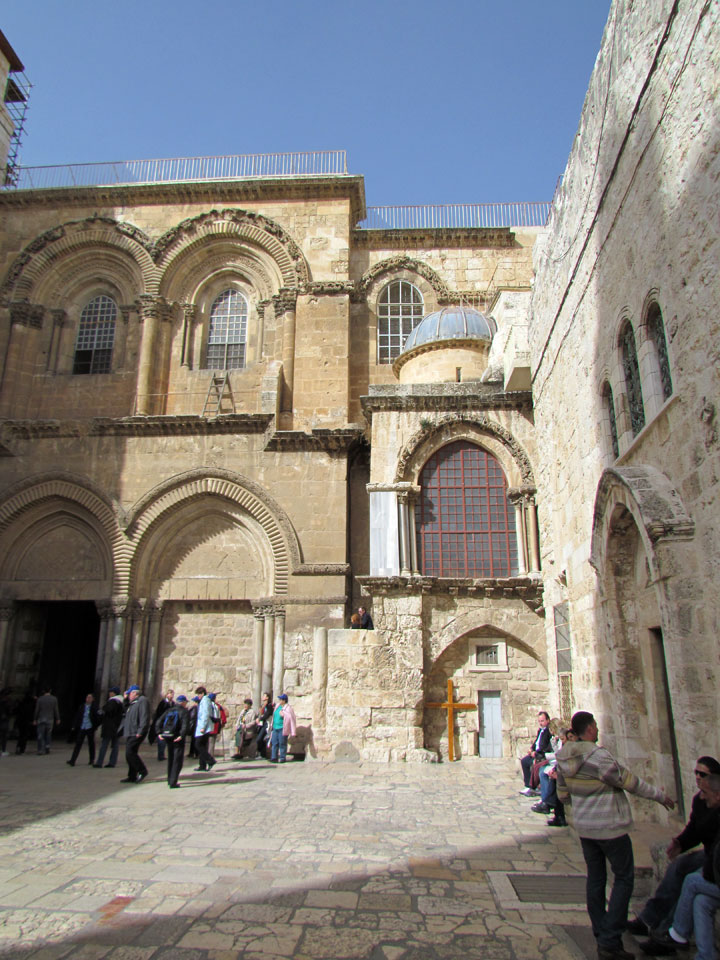
Church of the Holy Sepulchre
The Church of the Holy Sepulchre, also called the Church of the Resurrection by Eastern Christians, is a church within the walled Old City of Jerusalem. It is a few steps away from the Muristan.
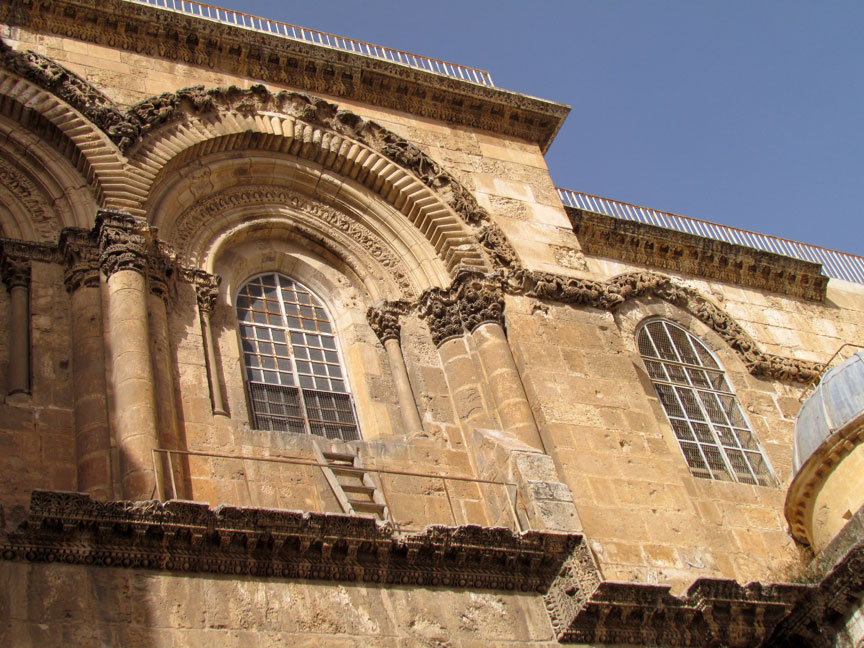
note the ladder
The site is venerated as Golgotha, (the Hill of Calvary), where Jesus was crucified, and is said to also contain the place where Jesus was buried (the sepulchre). The church has been an important Christian pilgrimage destination since at least the 4th century, as the purported site of the resurrection of Jesus. Today it also serves as the headquarters of the Greek Orthodox Patriarch of Jerusalem, while control of the building is shared between several Christian churches and secular entities in complicated arrangements essentially unchanged for centuries. Today, the church is home to Eastern Orthodoxy, Oriental Orthodoxy and Roman Catholicism. The church is also of limited importance to Anglican and Protestant Christians.

cross which was carried down the via Dolorosa by a Pilgrim
In the early 2nd century, the site of the present Church had been a temple of Aphrodite; several ancient writers alternatively describe it as a temple to Venus, the Roman equivalent to Aphrodite. Eusebius claims, in his Life of Constantine, that the site of the Church had originally been a Christian place of veneration, but that Hadrian had deliberately covered these Christian sites with earth, and built his own temple on top, due to his hatred for Christianity (the authenticity/inaccuracy of this claim is discussed below). Although Eusebius does not say as much, the temple of Aphrodite was probably built as part of Hadrian's reconstruction of Jerusalem as Aelia Capitolina in 135, following the destruction of the Jewish Revolt of 70 and Bar Kokhba's revolt of 132–135.
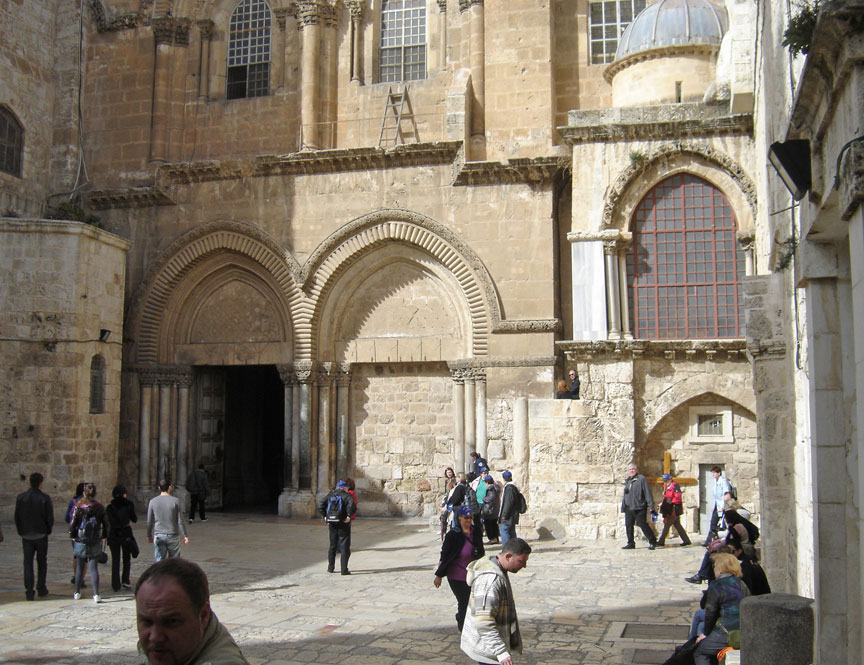
Emperor Constantine I ordered in about 325/326 that the temple be demolished and
the soil - which had provided a flat surface for the temple - be removed,
instructing Macarius of Jerusalem, the local Bishop, to build a church on the
site. The Pilgrim of Bordeaux reports in 333: There, at present, by the command
of the Emperor Constantine, has been built a basilica, that is to say, a church
of wondrous beauty. Constantine directed his mother, Helena, to build churches
upon sites which commemorated the life of Jesus Christ; she was present in 326
at the construction of the church on the site, and involved herself in the
excavations and construction.
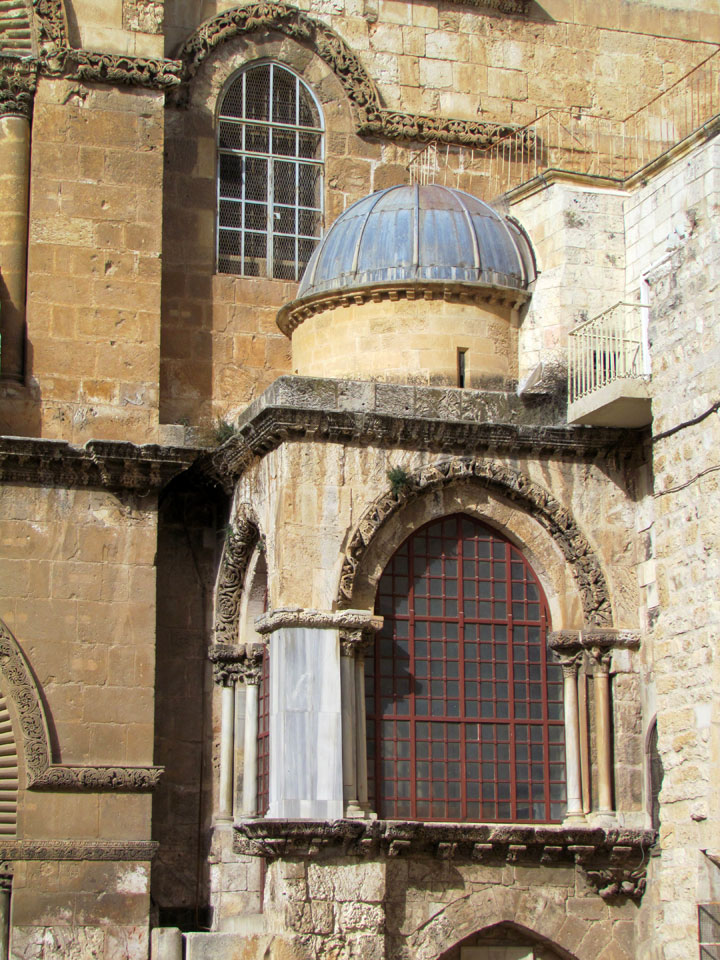
During the excavation, Helena is alleged to have rediscovered the True Cross,
and a tomb, though Eusebius' account makes no mention of Helena's presence at
the excavation, nor of the finding of the cross but only the tomb. According to
Eusebius, the tomb exhibited a clear and visible proof that it was the tomb of
Jesus; several scholars have criticised Eusebius' account for an uncritical use
of sources, and for being dishonest with Edward Gibbon, for example, pointing
out that Eusebius' chapter headings claim that fictions are lawful and fitting
for him to use. Socrates Scholasticus (born c. 380), in his Ecclesiastical
History, gives a full description of the discovery (that was repeated later by
Sozomen and by Theodoret) which emphasizes the role played in the excavations
and construction by Helena; just as the Church of the Nativity in Bethlehem
(also founded by Constantine and Helena) commemorated the birth of Jesus, the
Church of the Holy Sepulchre would commemorate his death and resurrection.
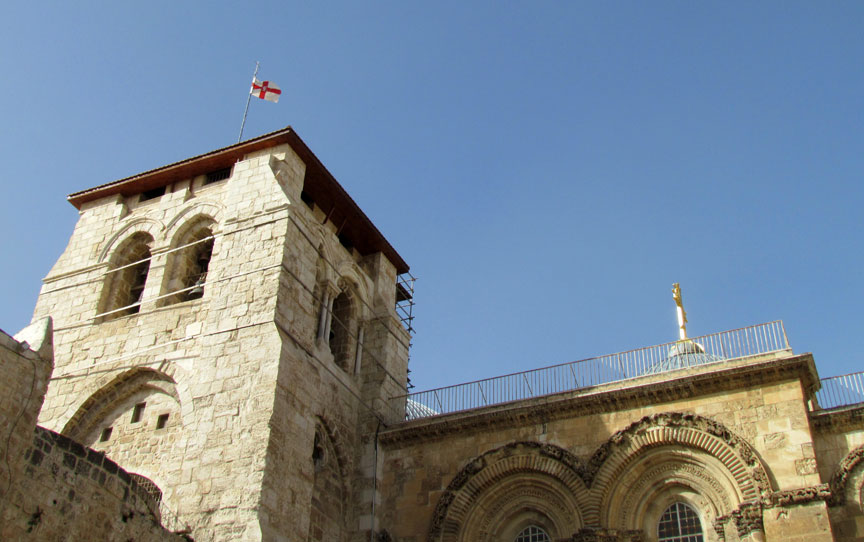
Constantine's church was built as two connected churches over the two different
holy sites, including a great basilica (the Martyrium visited by the nun Egeria
in the 380s), an enclosed colonnaded atrium (the Triportico) with the
traditional site of Golgotha in one corner, and a rotunda, called the Anastasis
("Resurrection"), which contained the remains of a rock-cut room that Helena and
Macarius identified as the burial site of Jesus. The rockface at the west end of
the building was cut away, although it is unclear how much remained in
Constantine's time, as archaeological investigation has revealed that the temple
of Aphrodite reached far into the current rotunda area, and the temple
enclosure would therefore have reached even further to the west.
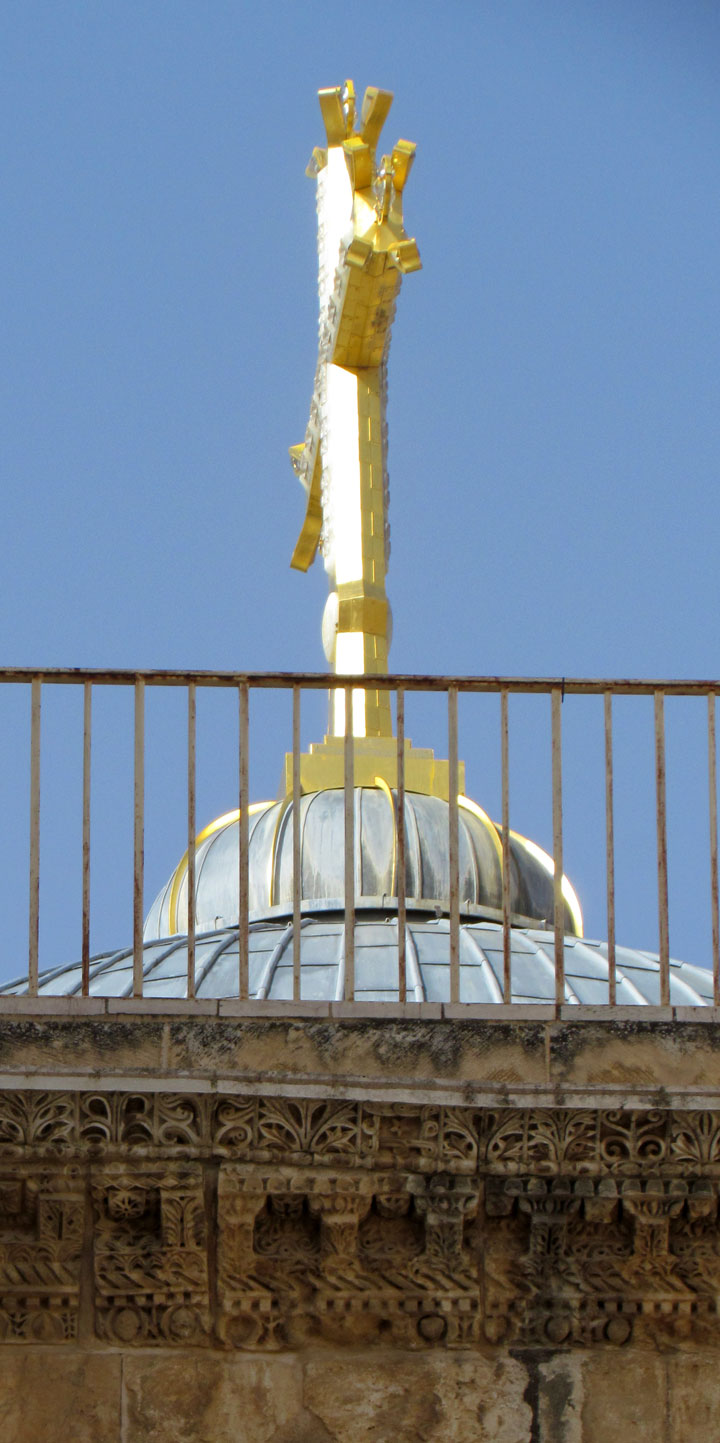
According to tradition, Constantine arranged for the rockface to be removed from
around the tomb, without harming it, in order to isolate the tomb; in the centre
of the rotunda is a small building called the Kouvouklion (Kουβούκλιον; Modern
Greek for small compartment) or Aedicule (from Latin: aediculum, small
building), which supposedly encloses this tomb, although it is not currently
possible to verify the claim, as the remains are completely enveloped by a
marble sheath. The discovery of the kokhim tombs just beyond the west end of the
Church, and more recent archaeological investigation of the rotunda floor,
suggest that a narrow spur of at least ten yards length would have had to jut
out from the rock face if the contents of the Aedicule were once inside it. The
dome of the rotunda was completed by the end of the 4th century.

Each year, the Eastern Orthodox Church celebrates the anniversary of the
consecration of the Church of the Resurrection
(Holy Sepulchre) on September 13
(for those churches which follow the traditional Julian Calendar, September 13
currently falls on September 26 of the modern Gregorian Calendar).

This building was damaged by fire in 614 when the Persians under Khosrau II
invaded Jerusalem and captured the Cross. In 630, Emperor Heraclius marched
triumphantly into Jerusalem and restored the True Cross to the rebuilt Church of
the Holy Sepulchre. Under the Muslims it remained a Christian church. The early
Muslim rulers protected the city's Christian sites, prohibiting their
destruction and their use as living quarters. In 966 the doors and roof were
burnt during a riot.

the keeper of the keys, an Arab,
opens and closes the church door
On October 18, 1009, under Fatimid caliph Al-Hakim bi-Amr Allah, orders for the complete destruction of the Church were carried out. It is believed that Al-Hakim "was aggrieved by the scale of the Easter pilgrimage to Jerusalem, which was caused specially by the annual miracle of the Holy Fire within the Sepulchre. The measures against the church were part of a more general campaign against Christian places of worship in Palestine and Egypt, which involved a great deal of other damage: Adhemar of Chabannes recorded that the church of St George at Lydda 'with many other churches of the saints' had been attacked, and the 'basilica of the Lord's Sepulchre destroyed down to the ground'. ...The Christian writer Yahya ibn Sa'id reported that everything was razed 'except those parts which were impossible to destroy or would have been too difficult to carry away'." The Church's foundations were hacked down to bedrock. The Edicule and the east and west walls and the roof of the cut-rock tomb it encased were destroyed or damaged (contemporary accounts vary), but the north and south walls were likely protected by rubble from further damage. The "mighty pillars resisted destruction up to the height of the gallery pavement, and are now effectively the only remnant of the fourth-century buildings." Some minor repairs were done to the section believed to be the tomb of Jesus almost immediately after 1009, but a true attempt at restoration would have to wait for decades.
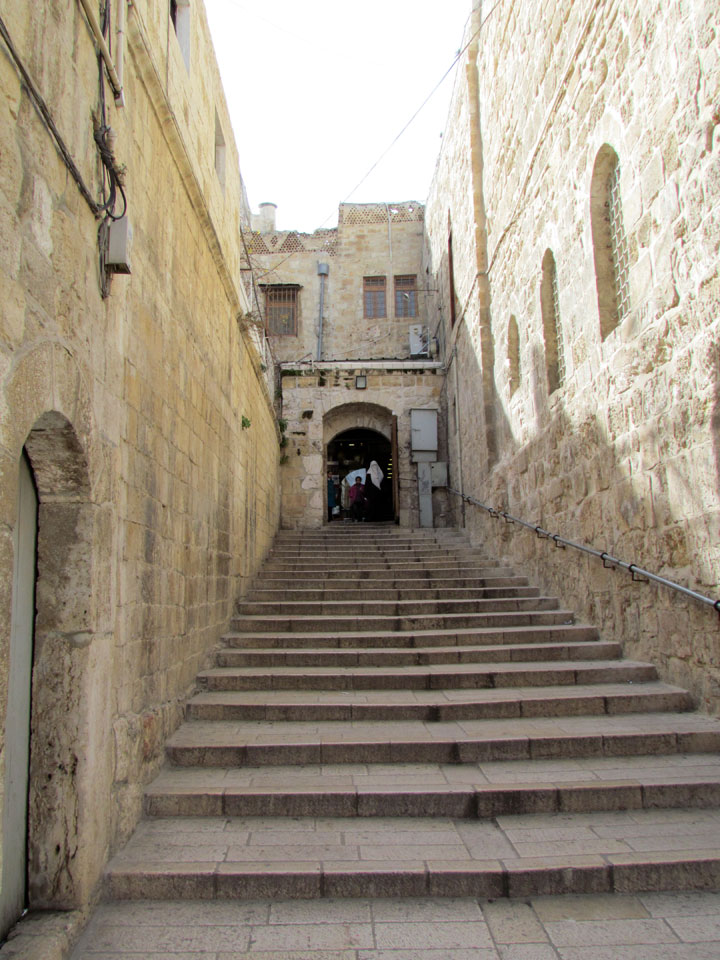
European reaction was of shock and dismay, with far-reaching and intense
consequences. For example, Clunaic monk Raoul Glaber blamed the Jews, with the
result that Jews were expelled from Limoges and other French towns. Ultimately,
this destruction provided an impetus to the later Crusades.
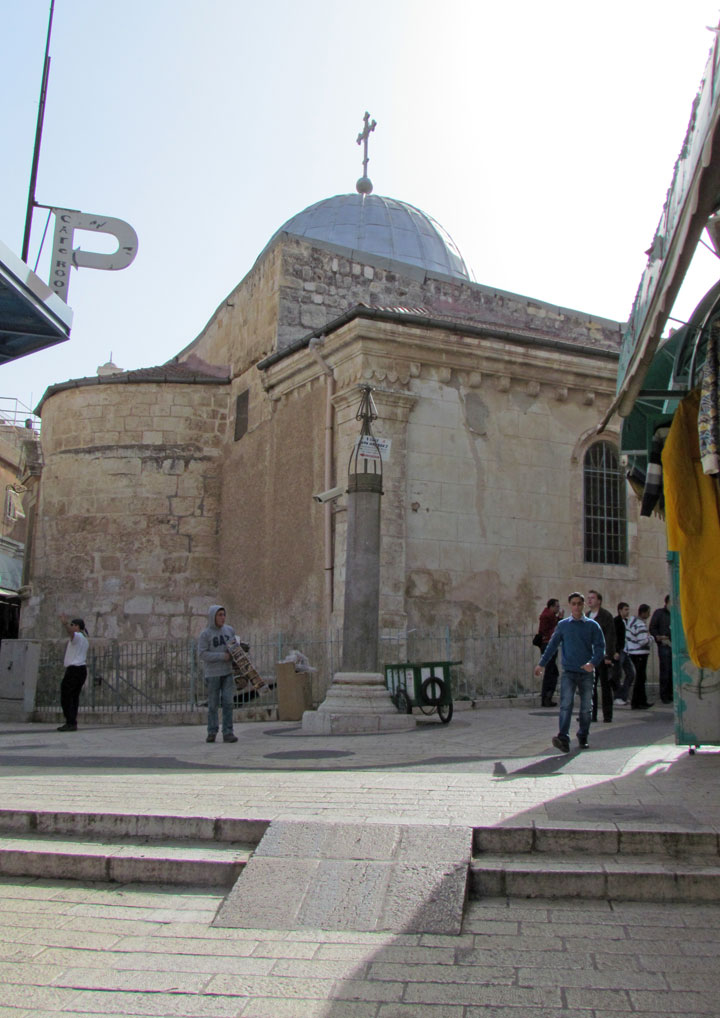
In wide ranging negotiations between the Fatimids and the Byzantine Empire in
1027-8 an agreement was reached whereby the new Caliph Ali az-Zahir (Al-Hakim's
son) agreed to allowing the rebuilding and redecoration of the Church. The
rebuilding was finally completed with the financing of the huge expense by
Emperor Constantine IX Monomachos and Patriarch Nicephorus of Constantinople in
1048. As a concession, the mosque in Constantinople was re-opened and sermons
were to be pronounced in az-Zahir's name. Muslim sources say a by-product of the
agreement was the recanting of Islam by many Christians who had been forced to
convert under Al-Hakim's persecutions. In addition the Byzantines, while
releasing 5,000 Muslim prisoners, made demands for the restoration of other
churches destroyed by Al-Hakim and the re-establishment of a Patriarch in
Jerusalem. Contemporary sources credit the emperor with spending vast sums in an
effort to restore the Church of the Holy Sepulchre after this agreement was
made. Despite the Byzantines spending vast sums on the project, "a total
replacement was far beyond available resources. The new construction was
concentrated on the rotunda and its surrounding buildings: the great basilica
remained in ruins." The rebuilt church site consisted of "a court open to the
sky, with five small chapels attached to it." The chapels were "to the east of
the court of resurrection, where the wall of the great church had been. They
commemorated scenes from the passion, such as the location of the prison of
Christ and of his flagellation, and presumably were so placed because of the
difficulties for free movement among shrines in the streets of the city. The
dedication of these chapels indicates the importance of the pilgrims' devotion
to the suffering of Christ. They have been described as 'a sort of Via Dolorosa
in miniature'... since little or no rebuilding took place on the site of the
great basilica. Western pilgrims to Jerusalem during the eleventh century found
much of the sacred site in ruins." Control of Jerusalem, and thereby the Church
of the Holy Sepulchre, continued to change hands several times between the
Fatimids and the Seljuk Turks (loyal to the Abbasid caliph in Baghdad) until the
arrival of the Crusaders in 1099.
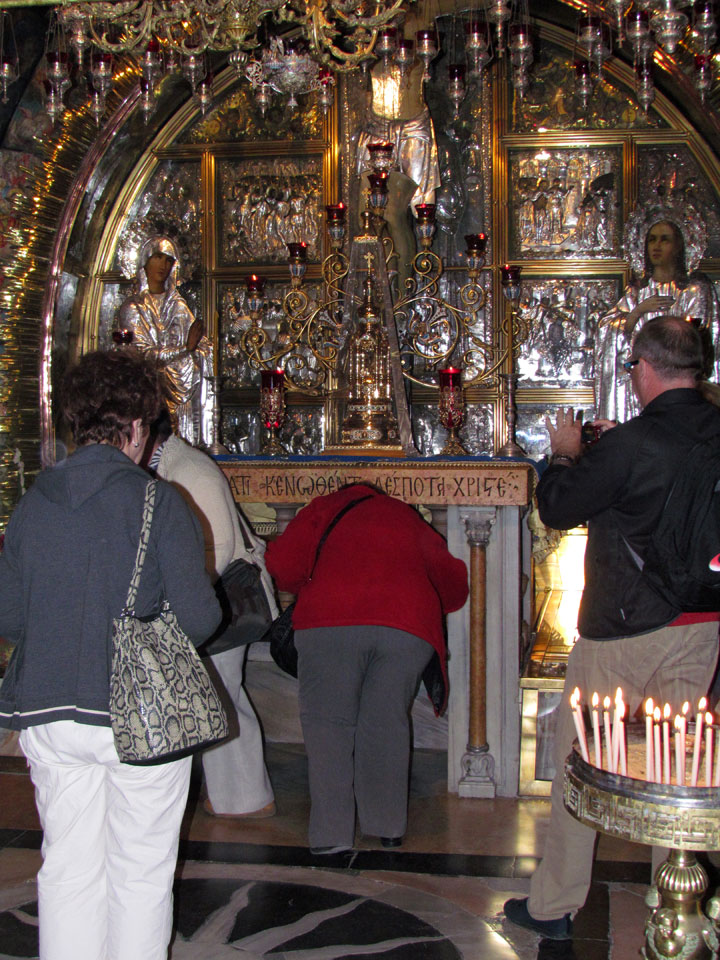
at the Hill of Calvary
More Photos of the Hill of Calvary
Many historians still maintain that the main concern of Pope Urban II, when calling for the First Crusade, was the threat to Constantinople from the Turkish invasion of Asia Minor in response to the appeal of Emperor Alexios I Komnenos. Still, historians agree that the fate of Jerusalem and thereby the Church of the Holy Sepulchre was of concern if not the immediate goal of papal policy in 1095. The idea of taking Jerusalem gained more focus as the Crusade was underway. The rebuilt church site was taken from the Fatimids (who had recently taken it from the Abassids) by the knights of the First Crusade on 15 July 1099.
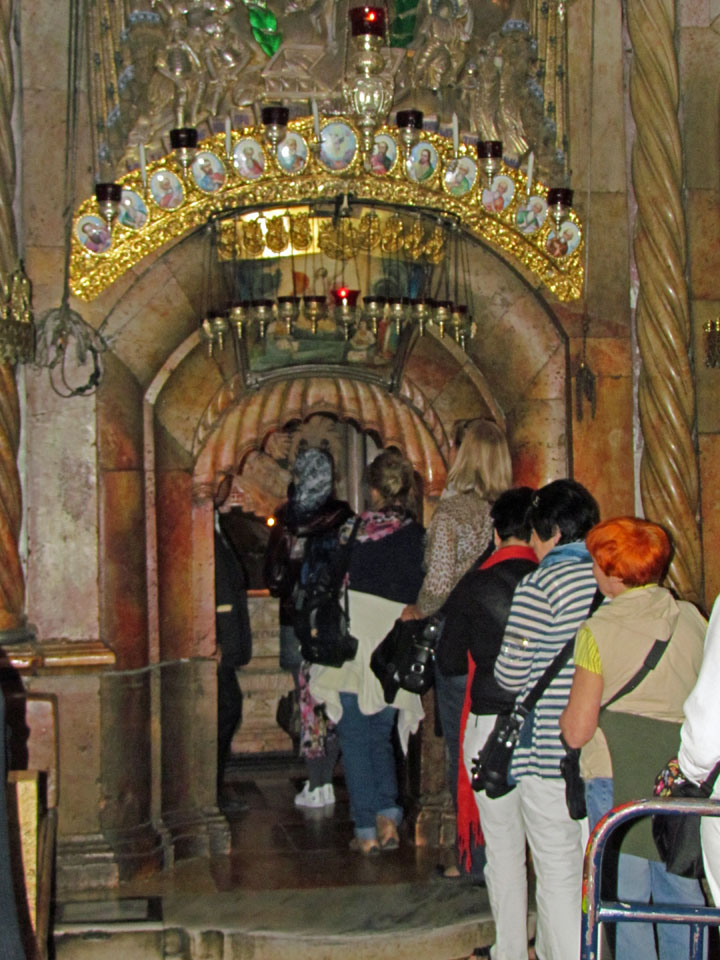
visiting the site of the tomb
The First Crusade was envisioned as an armed pilgrimage, and no crusader could consider his journey complete unless he had prayed as a pilgrim at the Holy Sepulchre. Crusader Prince Godfrey of Bouillon, who became the first crusader monarch of Jerusalem, decided not to use the title "king" during his lifetime, and declared himself Advocatus Sancti Sepulchri (Protector (or Defender) of the Holy Sepulchre). By the crusader period, a cistern under the former basilica was rumored to have been the location that Helena had found the True Cross, and began to be venerated as such; although the cistern later became the Chapel of the Invention of the Cross, there is no evidence for the rumour prior to the 11th century, and modern archaeological investigation has now dated the cistern to the 11th century repairs by Monomachos.
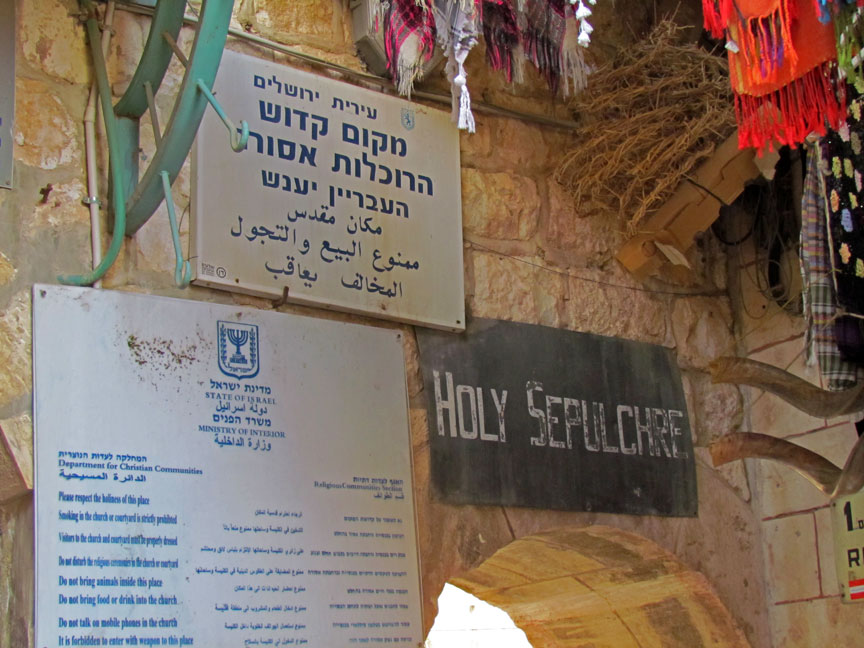
The chronicler William of Tyre reports on the renovation of the Church in the
mid-12th century. The crusaders investigated the eastern ruins on the site,
occasionally excavating through the rubble, and while attempting to reach the
cistern, they discovered part of the original ground level of Hadrian's temple
enclosure; they decided to transform this space into a chapel dedicated to
Helena (the Chapel of Saint Helena), widening their original excavation tunnel
into a proper staircase. The crusaders began to refurnish the church in a
Romanesque style and added a bell tower. These renovations unified the small
chapels on the site and were completed during the reign of Queen Melisende in
1149, placing all the Holy places under one roof for the first time. The church
became the seat of the first Latin Patriarchs, and was also the site of the
kingdom's scriptorium. The church was lost to Saladin, along with the rest of
the city, in 1187, although the treaty established after the Third Crusade
allowed for Christian pilgrims to visit the site. Emperor Frederick II regained
the city and the church by treaty in the 13th century, while he himself was
under a ban of excommunication, leading to the curious result of the holiest
church in Christianity being laid under interdict. Both city and church were
captured by the Khwarezmians in 1244.
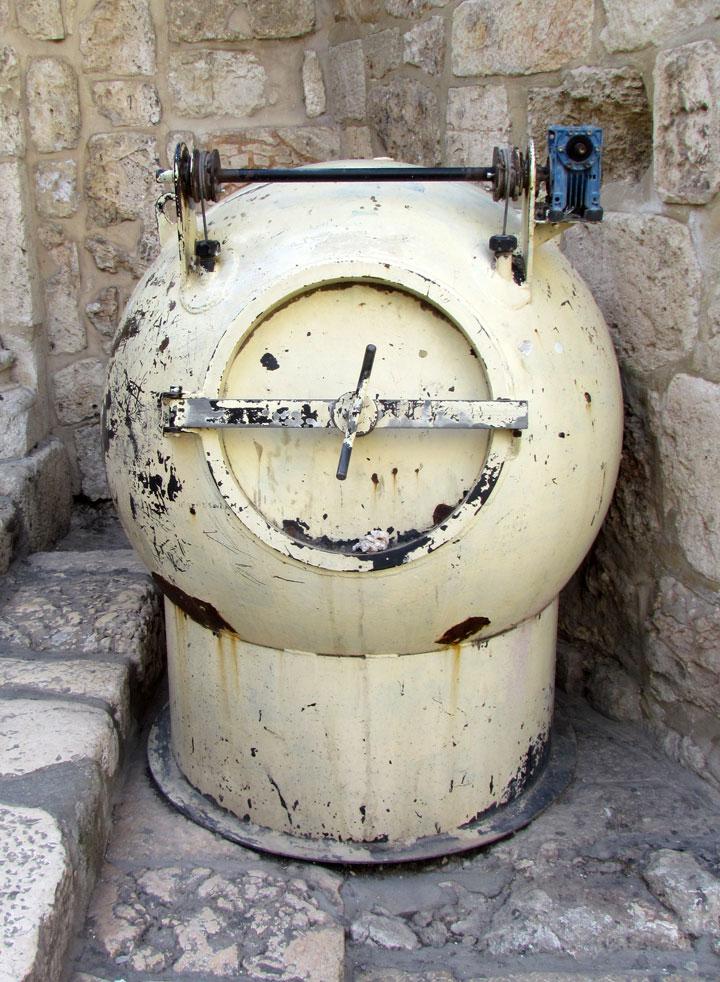
Church of the Holy Sepulchre (1885). Other than some restoration work, its appearance has essentially not changed since 1854. The same small ladder below the top-right window is also visible in recent photographs; this has remained in the same position since 1854 over a disagreement to move it.
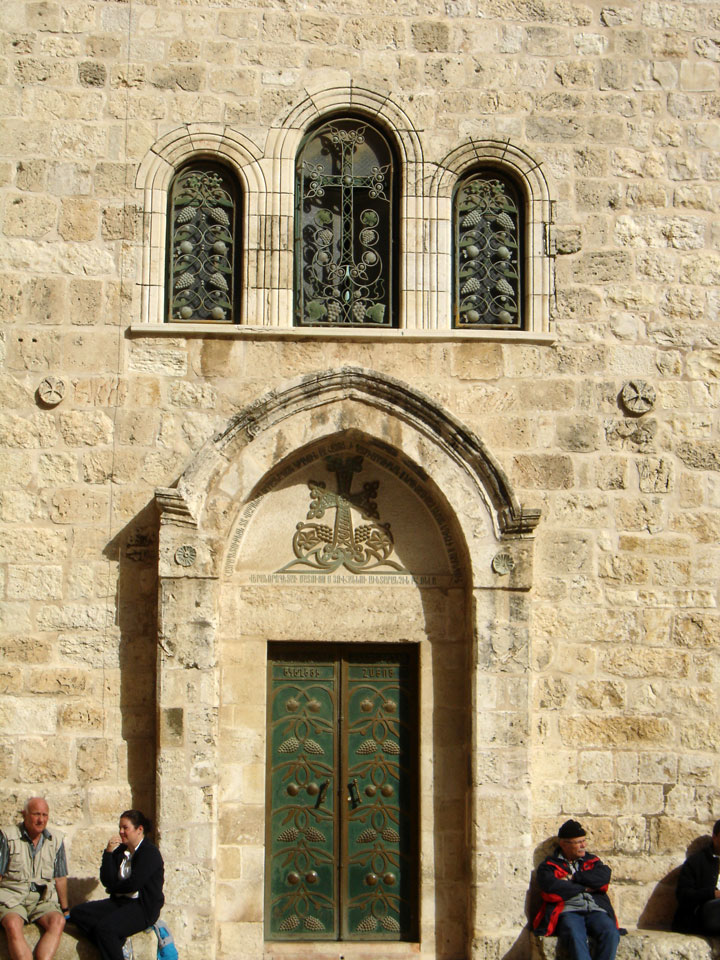
The Franciscan friars renovated it further in 1555, as it had been neglected
despite increased numbers of pilgrims. The Franciscans rebuilt the Aedicule,
extending the structure to create an ante-chamber. After the renovation of 1555,
control of the church oscillated between the Franciscans and the Orthodox,
depending on which community could obtain a favorable firman from the Sublime
Porte at a particular time, often through outright bribery, and violent clashes
were not uncommon. In 1767, weary of the squabbling, the Porte issued a firman
that divided the church among the claimants.

A fire severely damaged the structure again in 1808, causing the dome of the
Rotunda to collapse and smashing the Edicule's exterior decoration. The Rotunda
and the Edicule's exterior were rebuilt in 1809–1810 by architect Komminos of
Mytilene in the then current Ottoman Baroque style. The fire did not reach the
interior of the Aedicule, and the marble decoration of the Tomb dates mainly to
the 1555 restoration, although the interior of the ante-chamber, now known as
the Chapel of the Angel, was partly re-built to a square ground-plan, in place
of the previously semi-circular western end. Another decree in 1853 from the
sultan solidified the existing territorial division among the communities and
set a status quo for arrangements to "remain forever", caused differences of
opinion about upkeep and even minor changes, including disagreement on the
removal of an exterior ladder under one of the windows; this ladder has remain
in the same position since then.
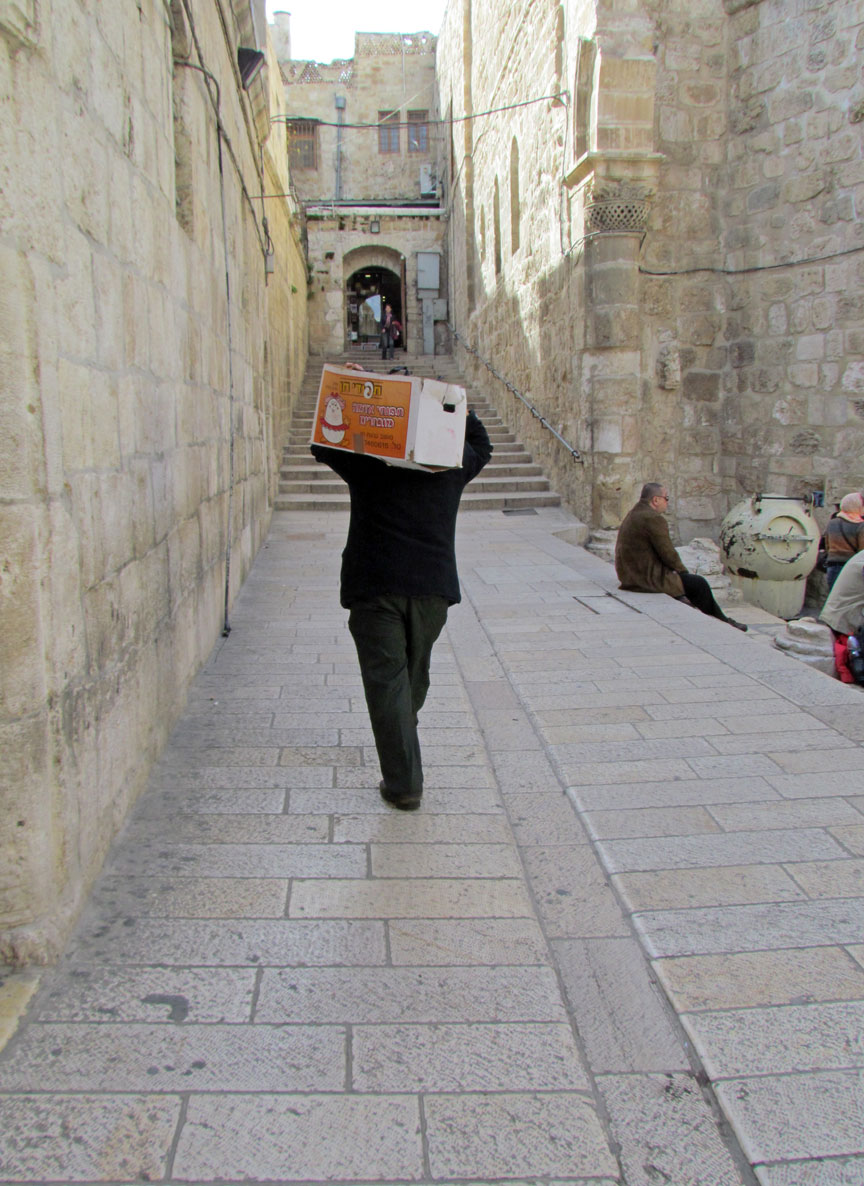
The cladding of red marble applied to the Aedicule by Komminos has deteriorated
badly and is detaching from the underlying structure; since 1947 it has been
held in place with an exterior scaffolding of iron girders installed by the
British Mandate. No plans have been agreed upon for its renovation.
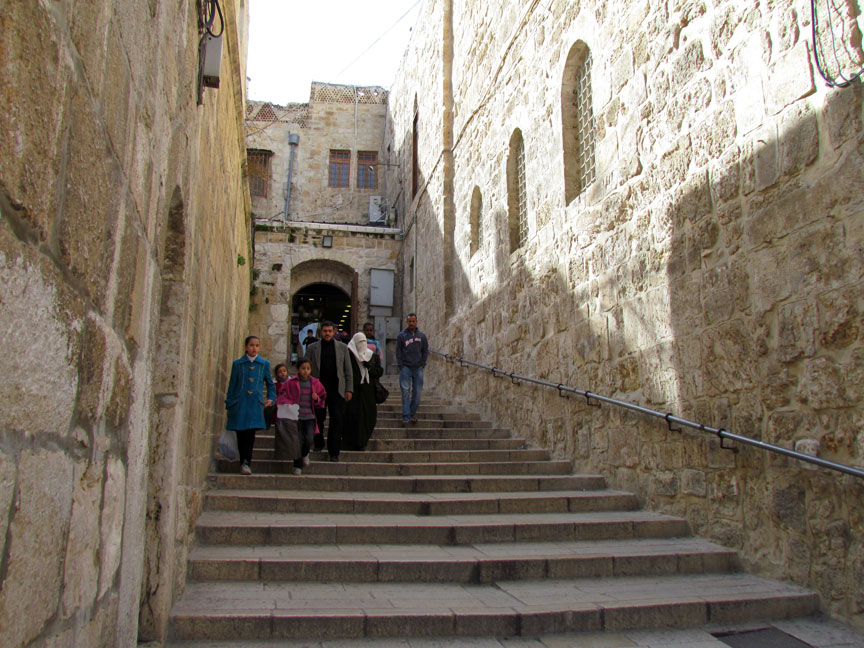
The current dome dates from 1870, although it was restored during 1994–1997, as
part of extensive modern renovations to the Church of the Holy Sepulchre, which
have been ongoing since 1959. During 1973–1978 restoration works and excavations
inside the building, and under the nearby Muristan, it was found that the area
was originally a quarry, from which white meleke limestone was struck. To the
east of the Chapel of St. Helena, the excavators discovered a void containing a
2nd century drawing of a roman ship, two low walls which supported the platform
of Hadrian's 2nd century temple, and a higher 4th century wall built to support
Constantine's basilica; the Armenian authorities have recently converted this
archaeological space into the Chapel of Saint Vartan, and created an artificial
walkway over the quarry on the north of the chapel, so that the new Chapel could
be accessed (by permission) from the Chapel of St. Helena.
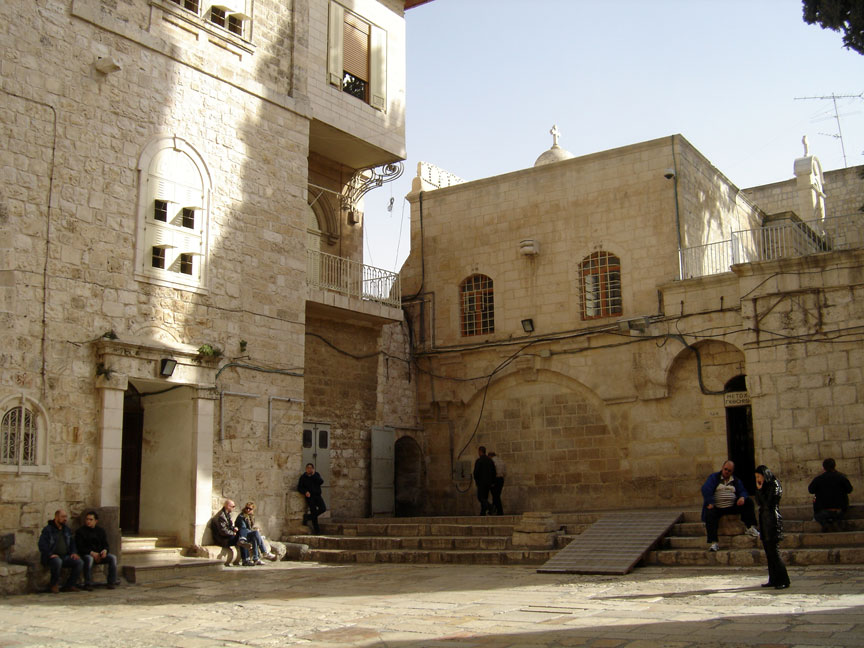
There has been some controversy recently when the Jerusalem City Council threatened to cut off water to the site due to disputed water bills.
Text from Wikipedia